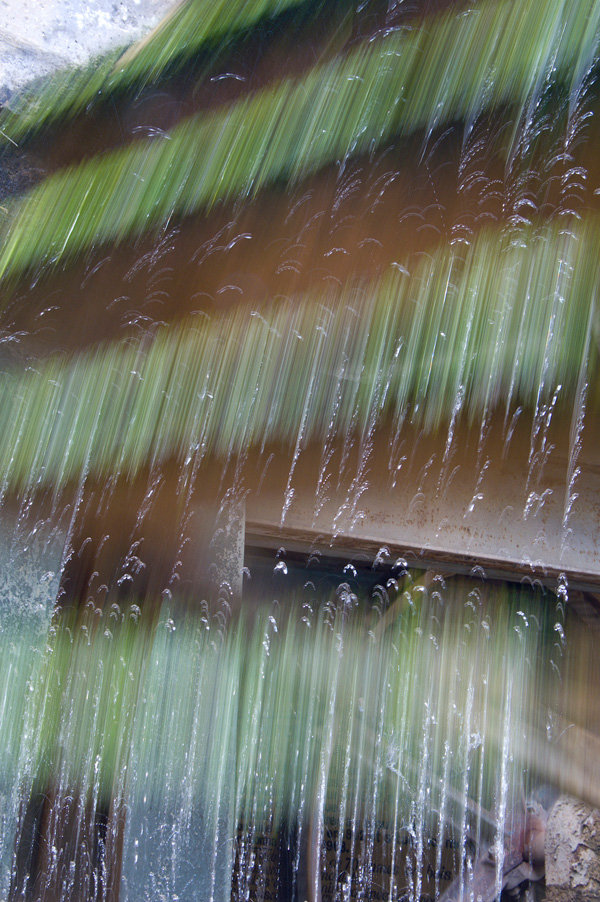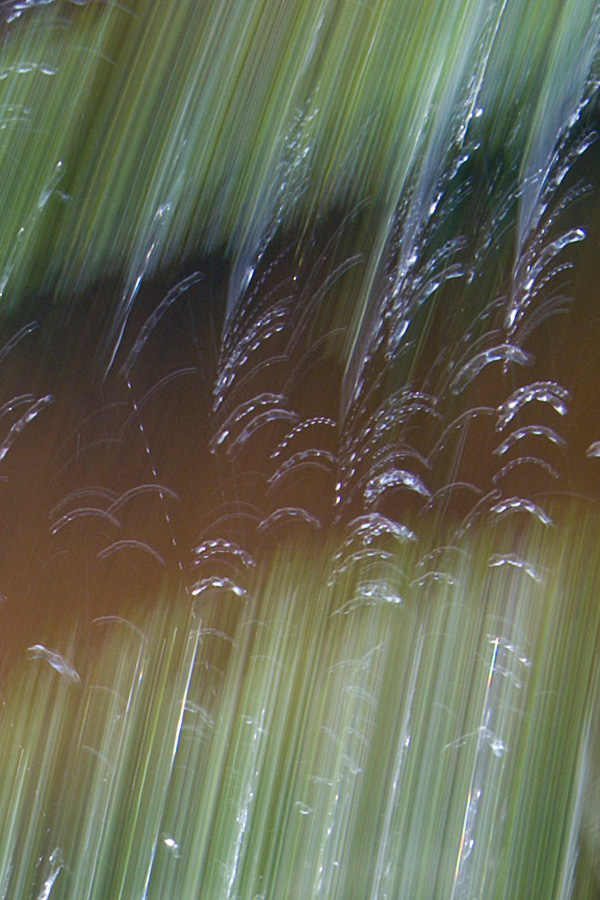Frozen water – at 1/10th of a second?
WE spent a great week shooting mainly in Vaucluse, the district to the east of Avignon in the south of France, with Shirley using the 18-250mm Tamron f/3.5-6.3 lens exclusively. One object of this was to get some more example photos for a short article on the lens in our forthcoming Photoworld magazine.
Well, photography can always throw up surprises and used to do so much more with film than it does with digital. This time, a few shots which Shirley took had us studying the files at full size and trying to work out how on earth pin-sharp details of frozen water in fast motion – without flash – appeared in some hand-held SSS short time exposures of a powerful water wheel in Fontaines de Vaucluse.
First, some praise for AS/SSS. We don’t use tripods or even monopods any more. As the airport staff in Edinburgh were making people put normal size umbrellas in the sin-bin at the departure point (too dangerous a weapon to go on board) I asked whether my Benbo monopod would be allowed. ‘Only if it folds down to about a foot long’, said the security man. ‘You are allowed a folding umbrella but we won’t allow tripods or monopods on board unless they fold right down’. The Minolta and Sony in-body stabilisation allows us to take countless images which would normally require a tripod and get them sharp enough to pass picture library quality standards. Shirley does not even think about the potential for shake when setting her Minolta 5D to 1/6th, 1/10th or a speed like that with a wide-angle lens.
On this occasion, she stopped down to f/22 for a few shots getting loads of motion blur from the wheel, and opened up to f/14 for one at 1/10th which probably was about the optimum. All were sharp, in the sense that the core image of non-moving parts behind the wheel was sharp, but this one was sharp to the extent that a sign inside the paper mill could be read. The lens was set to 40mm and autofocused on the front of the wheel but the depth of field extended further. Here is the image:
You can see the text behind the mechanisms at the very bottom of the image. But look at the water. What’s happening? The mill wheel is blurred, in 1/10th of a second this thundering giant (you can’t tell the sheer scale of it here) was thoroughly blurred into a series of green bands formed by the rich algae growing on the blades. The river Sorgue is extremely clear and pure, emerging from an underground source a short distance before this wheel, and it is full of vibrant green plant life.
The streams of water thrown off by the wheel have been imaged, despite the exposure time, with all the clarity of an Edgerton ‘frozen droplet’ image . No flash was used. This was daylight.
Here’s a close-up of a section of the shot:
How has this happened? It’s actually very simple. The AS in the Dynax 5D has kept the image very steady, as you can tell from the minimal wavering or variation from the straight lines of the water-sheel blur. There is a tiny amount of residual shake. Exposing a moving object is a fairly good way to ‘graph’ how effective AS/SSS is, and how it tracks. The water has been thrown off the wheel in small arcs of movement, a parabolic trajectory.
Notice that the water does not actually start at the wheel edge. The arcs start to appear in mid air. That’s because the wheel was in shade, but the water being thrown off entered bright sunlight – backlight – as it came towards the camera. These arcs may look like a stream or jet of water, but they are not. Each one is the track created by a single brightly lit sphere, one droplet of water. The sunshine is refracted by the drop and highlights only its edges (top and bottom) giving the illusion of a jet or cylinder, and where the droplet has wavered in the airstream and changed shape slightly, a ‘string of beads’ effect is created just by the changing angle of the light. To the eye this would appear as a sparkling effect.
The water has drawn its own tracks, sharply, within the depth of field for sharp focus at f/14. In the process it looks more like icicles than liquid water, or like the result of freeze motion flash exposure.
But it was not – it’s a hand held, AS stabilised tenth of a second and just one of those surprises which photography can sometimes reward you with.
Photograph by Shirley Kilpatrick.


